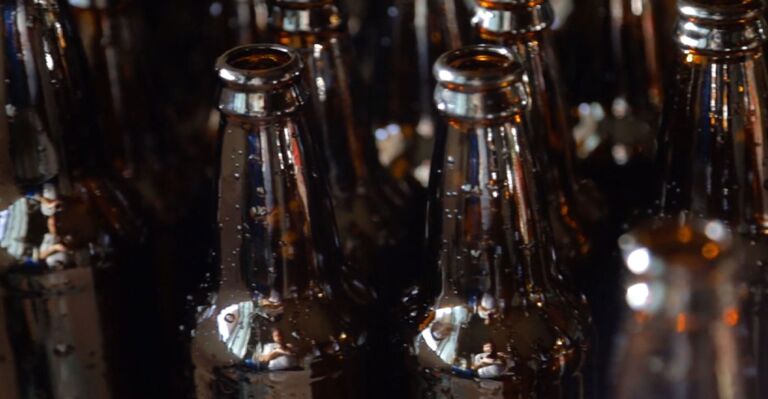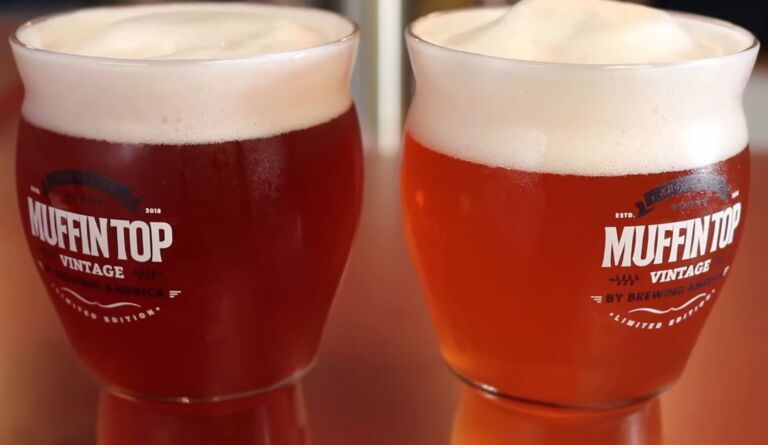Modelo Clone Beer Recipe
Are you looking to brew a batch of cerveza like the Mexican lagers you love? Craft your version of Modelo Especial with this easy homemade clone recipe. Just a handful of simple ingredients are all you need to mimic that crisp, clean taste. We’ll cover the malt bill, hop additions, and fermentation tips to help you nail the style. While not exact, this clone recipe captures the light, refreshing character that has made Modelo a go-to beer for pairing with tacos, fajitas, and more. Follow along to learn how to brew a Mexican lager clone fit for fiestas in your own cocina. ¡Salud!
Executive Summary
Are you looking to brew a Mexican lager like Modelo at home? This easy clone recipe lets you recreate the light, crisp taste with just a few key ingredients. Start with a simple grain bill of 2-row pale malt and flaked corn to get the right malty flavor. Bitter to ~18 IBUs with Northern Brewer hops added at 60 minutes. Ferment cool around 50°F with a Mexican lager yeast. Give it a three-week lagering time once fermentation finishes. The result is a refreshing, smooth Mexican lager clone perfect for tacos, fajitas, and more. ¡Salud!

Understanding the Ingredients
Modelo is a classic Mexican lager known for its light, crisp, refreshing taste. While the exact Modelo recipe is a closely guarded secret, homebrew clone recipes can come quite close by using just a handful of key ingredients.
The base malt in Modelo is likely a pilsner malt, which provides a pale color and lightly bready malt flavor. Pilsner malt has enough enzyme power to convert the starches from other grains and adjuncts like corn and rice. These adjuncts lighten the body and alcohol content while lending a subtle sweetness characteristic of Mexican lagers.
Flaked maize, or corn, is an essential ingredient in Modelo, making up 10-20% of the grain bill. The flaked corn contributes corn-like flavors and boosts drinkability by thinning out the body. The reduced body accentuates the crisp finish. However, too much-flaked corn can lead to a stuck mash. A touch of rice hulls helps maintain a loose mash when using corn.
Northern Brewer hops are likely used as the sole bittering hop in Modelo. Their smooth, rounded bitterness balances the hop character without overpowering the malt and corn flavors around 18 IBUs. Any late hop additions are minimal.
When it comes to yeast, a Mexican lager strain is critical to achieve the desired clean and crisp lager profile. Fermenting cool, followed by an extended lagering period, allows this yeast’s flavors to shine.
Proper fermentation and lagering temperatures are critical for keeping fruity esters and other off-flavors at bay. Cool fermentation followed by cold conditioning yields the smooth, spot-on lager flavor that Modelo is loved for.
In summary, a simple grain bill, corn adjunct, subtle Northern Brewer bittering hops, and Mexican lager yeast fermented cool are the core pillars of Modelo’s recipe. While the exact quantities and proprietary techniques are undisclosed, following these guidelines will have you brewing up a fantastic Mexican lager clone.
Recipe 1: Modelo Especial Clone
Brew your own version of the famous Mexican lager Modelo Especial with this easy homebrew recipe. Follow these simple steps for crisp, clean cerveza.
Ingredients:
- 6 lbs 2-row brewers malt
- 2 lbs flaked corn
- 0.5 oz Northern Brewer hops (60 min) – aim for ~18 IBU
- Mexican Lager yeast – make a starter
Brewing Process:
Mash the grains and corn together with enough water to achieve a temperature of 152°F for 60 minutes. Sparge with 170°F water.
Boil for 60 minutes, adding the 0.5 oz Northern Brewer hops at the start of the boil for bittering.
Cool the wort quickly to under 70°F and transfer it to the fermenter.
Pitch the yeast starter and ferment at 50°F for two weeks. Raise the temperature to 60°F for a diacetyl rest for two days before lowering the again to larger.
Lager for 3-4 weeks at 40°F.
Keg or bottle, then carbonate.
Tips:
- Add rice hulls if needed to avoid a stuck sparge
- Oxygenate wort prior to pitching yeast
- Make a yeast starter
- Ferment cool and lager for the best flavor
- Add lime juice to the finished beer for extra authenticity
Now enjoy your crisp, refreshing homemade Modelo Especial!
Recipe 2: Modelo Negra Clone
Brew a dark, easy-drinking lager modeled after Modelo Negra with this homebrew recipe.
Ingredients:
- 5 lbs Vienna malt
- 2 lbs Pilsner malt
- 1 lb Caramel 80L – provides color and sweetness
- 8 oz Flaked Maize – for body and flavor
- 1 oz Northern Brewer hops (60 min) – ~20 IBU
- Mexican Lager yeast
Brewing Process:
Mash grains and corn at 154°F for 60 minutes. Sparge at 168°F.
Boil wort for 60 minutes, adding Northern Brewer hops at the start of the boil.
Cool quickly and transfer to fermenter.
Pitch yeast starter and ferment at 50°F for two weeks.
Raise temperature to 60°F for diacetyl rest for 48 hours.
Lager at 40°F for four weeks.
Keg or bottle, then carbonate.
Tips:
- Add caramel malt to boil for more color if needed
- Consider cold steeping dark grains
- Use rice hulls to prevent stuck sparge
- Oxygenate and make a yeast starter
- Lager for a month for the best flavor
Enjoy your malty, dark Mexican lager clone!
Recipe 3: Modelo Chelada Clone
Put a flavorful spin on classic Modelo with this easy homemade Chelada recipe.

Ingredients:
- One bottle Modelo Especial beer (or Modelo clone homebrew)
- 1⁄2 cup tomato juice
- 1⁄4 cup lime juice
- 2 tsp hot sauce (Valentina or Cholula recommended)
- Salt and pepper to taste
Preparation:
Combine ingredients in a large glass:
- Pour in Modelo beer
- Add tomato juice, lime juice, and hot sauce
- Season with a pinch of salt and pepper
- Stir gently to incorporate
Garnish:
- Lime wedge
- Tajin or salt on the rim
Serving:
- Pour over ice and enjoy immediately
- Garnish with lime wedge and Tajin or salt on the rim
Tips:
- Adjust tomato, lime, and hot sauce to taste
- Use fresh squeezed lime and tomato juice
- Tajin chile-lime seasoning adds authentic flavor
- Garnish glass with chile-lime rimmer
Now kick back with this tasty Mexican cerveza cocktail! ¡Salud!
Tips for Designing Your Own Recipe
Crafting an original beer recipe may seem daunting, but follow a few basic principles. Selecting ingredients and determining quantities are equal parts science and art.
First, decide on a target style and flavor profile. Do you want to brew an IPA, stout, wheat beer? This will guide your choice of malts, hops, yeast, and other ingredients.
Next, research recipes for commercial and homebrew examples of your style. Take note of typical ingredient amounts and ratios. For example, IPAs often have an OG of around 1.060 and 40-60 IBUs.
When choosing malts, consider the color, flavor, and enzymes they provide. Base malts like 2-row give sugar for fermentation, while specialty malts like crystal or roasted malts provide color, taste, and body.
Hop additions should complement your style – fruity vs. dank hops or high vs. low bitterness levels. Focus on hop flavor/aroma close to serving to maximize freshness.
Pick a yeast suitable for your desired alcohol level, flavor profile, and beer type (ale vs. lager). Make a starter for healthy fermentation.
Use brewing software to scale ingredients and tweak amounts to hit your target OG, FG, IBUs, SRM, and ABV.
Take detailed notes on your recipe design decisions and tasting feedback for next time. Feel free to experiment and put your own spin on a style.
With some brewing knowledge and creativity, you can craft unique, delicious recipes to your exact preferences.

FAQ
What type of water profile works best for brewing this Modelo clone recipe?
Modelo is brewed in Mexico, so aiming for a water profile similar to Mexico City or another Mexican brewing region can help nail the flavor. Target calcium around 100-150 ppm, add some sulfate for hop punch, and add sodium chloride to enhance malt character. Using RO or distilled water allows you complete control over your water chemistry. A lower pH mash around 5.2-5.4 also helps achieve a crisp, refreshing finish.
Does this Modelo clone recipe require any advanced brewing equipment?
You can undoubtedly brew a good version with basic homebrew gear, but having some essential equipment can help take it to the next level. Temperature control during fermentation is critical, so a fermentation chamber or glycol system allows for precision lagering. An all-grain system with a fine crush helps improve efficiency and extract potential. Oxygenation before pitching and making a yeast starter ensures healthy fermentation. Lastly, a counterpressure bottle filler helps avoid oxidation during packaging.
What are some tips for getting the look and appearance of an actual Modelo beer?
Shoot for a final beer color around 3-5 SRM, with a lovely pale straw to light gold hue. Chill haze should be minimal when served cold. Pouring into a branded Modelo glass can help complete the visual appeal. Carbonating on the higher end, around three volumes, will give it a nice frothy white head and bubbly mouthfeel. Preventing oxidation and UV exposure protects the beer from darkening over time. Filtration helps achieve brilliant clarity but is optional for the homebrew scale.
Is there anything else a brewer should know before attempting this recipe?
Efficiency can be lower when using flaked corn, so plan your recipe and volumes accordingly. The flaked corn may also lead to a stuck sparge, so be prepared with a rice hull addition if needed. Sanitation is critical when brewing lagers to avoid off flavors. Use healthy, properly-sized lager yeast starters for fermentation. Lastly, be patient during the entire month-long brewing process for the best results!
Related Video: BREW YOUR OWN Negra Modelo! All Grain Dark Mexican Lager Beer For Beginners
Final Words
Recreating the crisp, clean taste of a Mexican lager like Modelo at home is easy with this straightforward clone recipe. You can brew up a spot-on version in your own brewery using just a simple grain bill, light hop additions, and proper lager yeast fermentation. Enjoy this homemade clone’s light maltiness, restrained bitterness, and smooth mouthfeel. Whether sipping solo or pairing it with your favorite Mexican food, this Modelo-inspired brew lets you bring the south-of-the-border cerveza experience to your own cocina. Try this recipe and say “salud” to your next round of tacos and cervezas. ¡Provecho!







